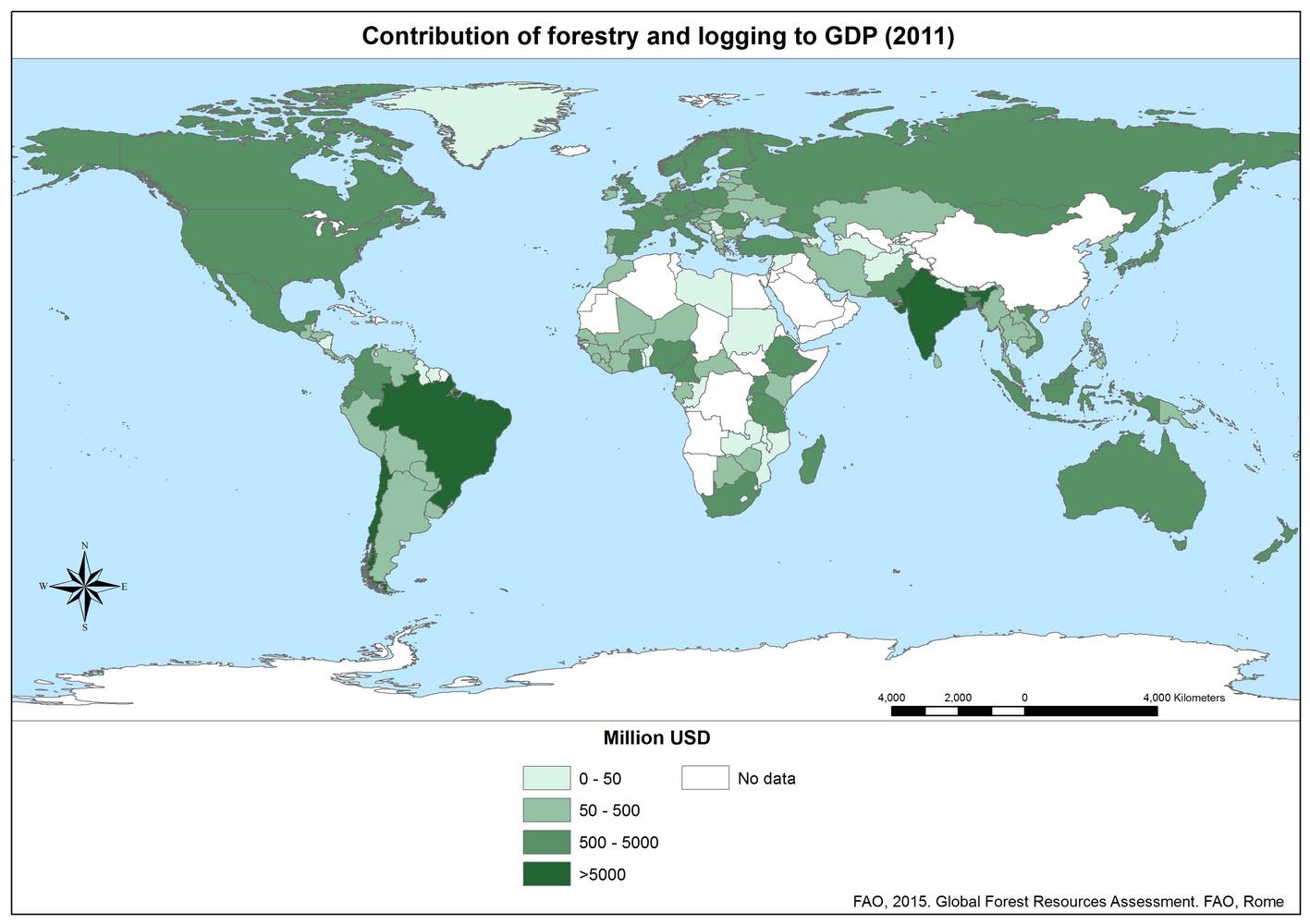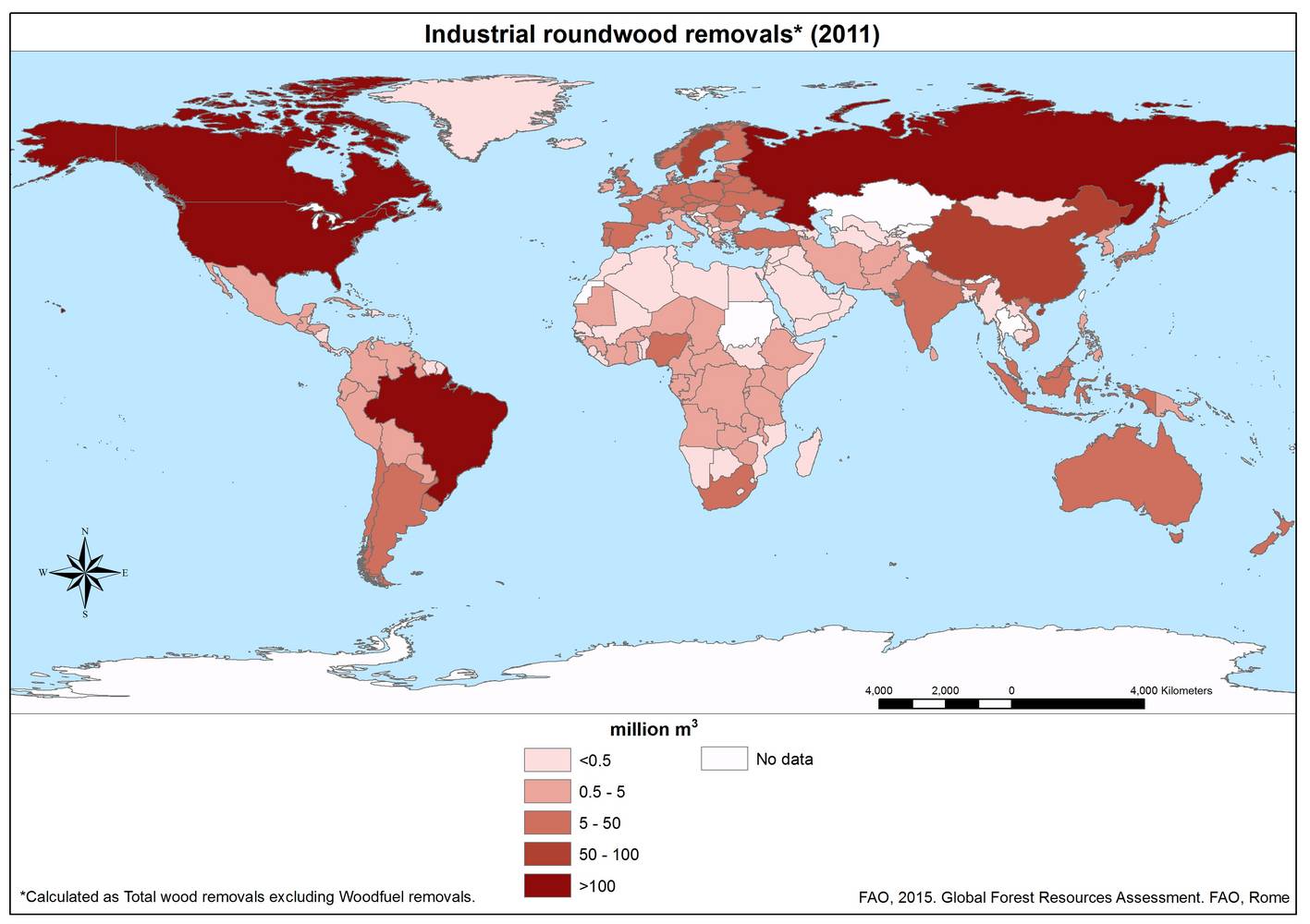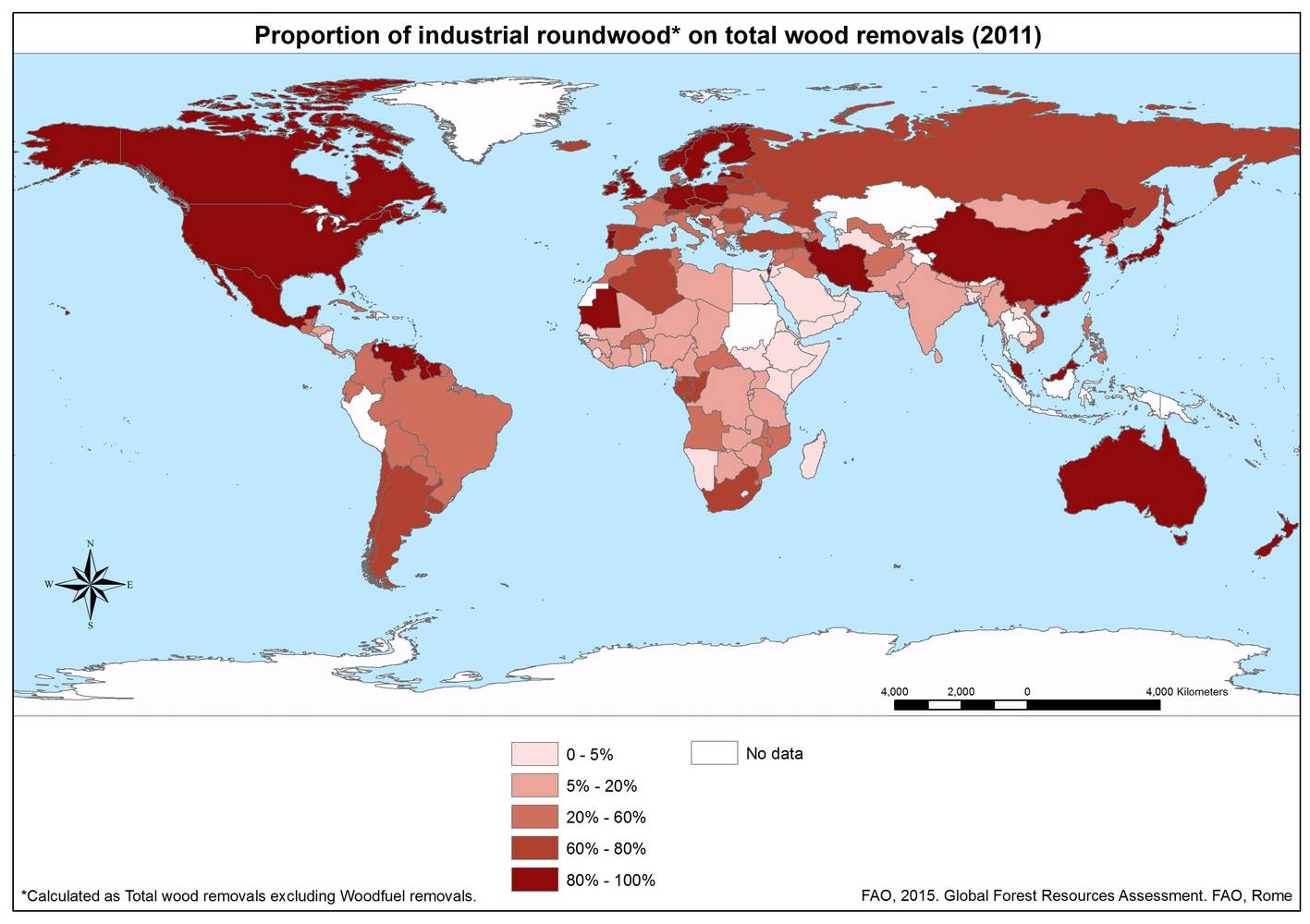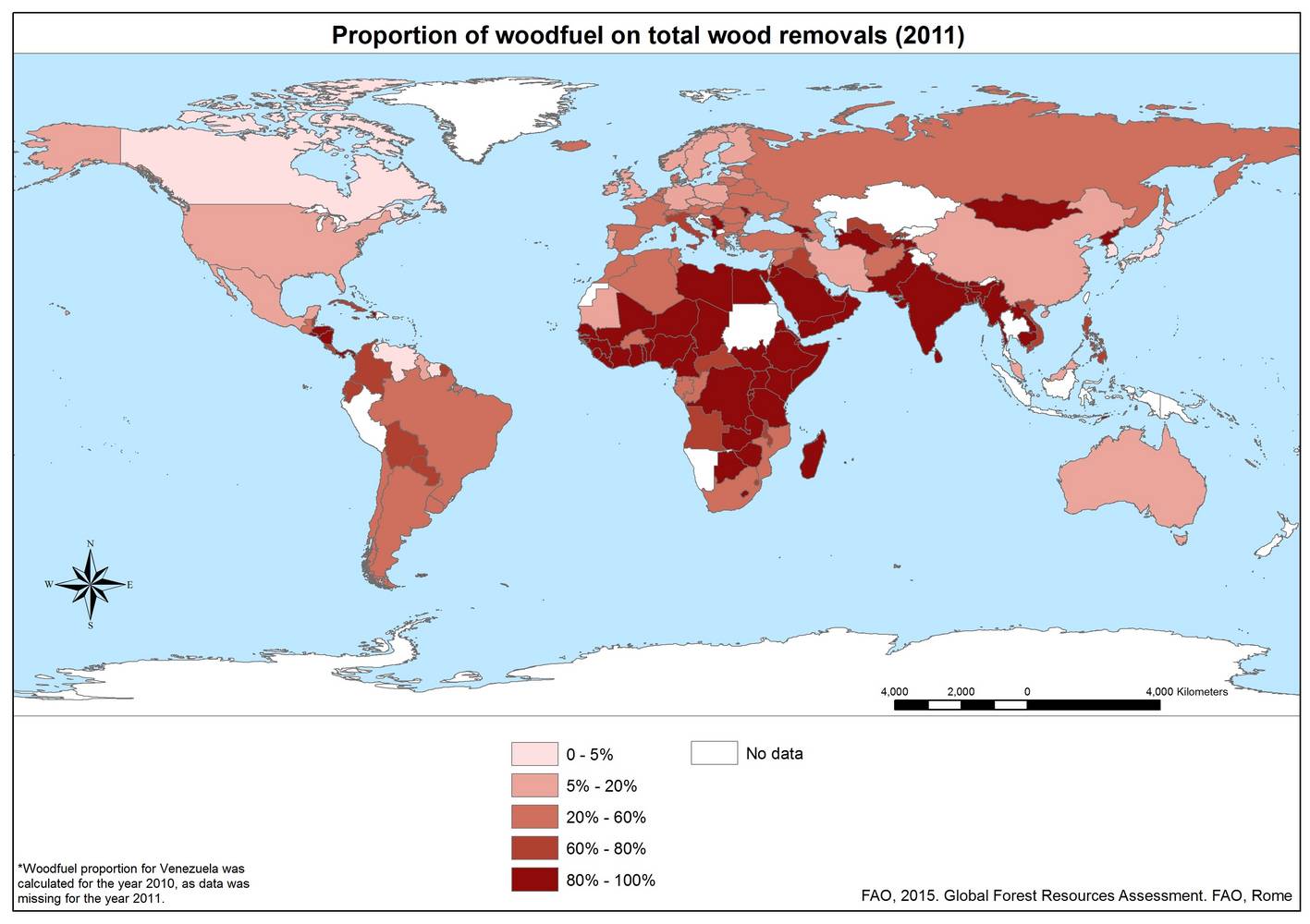Productivity - Income Generation by Improving Skills and Productivity
Improvements in forest and labor productivity can become a pathway out of poverty when either resource extraction is sufficiently profitable or the returns to labor are high enough that they contribute to wealth accumulation. Growth in land and labor productivity is integral to the economic development of the rural poor (Irz et al 2001 and de Janvry and Sadoulet 2010).
- Overview: Enhancing labor and forest productivity can be a pathway out of poverty for forest-dependent households, especially if paired with other interventions like strengthening rights
- Evidence map: The most commonly studied productivity-enhancement strategies in the literature are forest management, agroforestry, and habitat management, and their links to monetary income and to social capital
- Country study: Vietnam - World Bank support to smallholder forest operations brought gains to households’ livelihoods through enhancing labor productivity and forestland productivity
- World Bank Portfolio Review: 58% of the forest investments in the portfolio included interventions to enhance labor and forest productivity
Overview
Large areas of forest land are put to many productive uses. Currently, some 31% of the world’s forests are designated as primarily production forests, with an additional 28% of reported forest areas being multiple-use areas (FAO 2015). Plantation forests are a small proportion of overall forest area (7%), but their share is growing, as are smallholder plantations (FAO 2016). Timber is commercially the most important and sought-after product in most forests, generating a gross value added of USD 606 billion in 2011. Timber activities have high returns and can improve forest households’ welfare.
Increasing the returns to plantation and production forestry may require better management of natural forests for timber and NTFPs, use of best practices in plantations and agroforestry as well as fire, pest and disease control. Improving smallholders’ skills in harvesting, management and product marketing will also be important.
Although employment opportunities can be limited, as large-scale timber enterprises often do not result in formal employment of local community members and can even marginalize them (McKenney et al 2004, Mayers 2006, Blaser & Zabel 2015), it is more profitable for communities to work with logging companies than to harvest on their own with the support of well-meaning non-governmental organizations and donors (Medina et al 2009). As a matter of fact, timber planting, harvesting and processing is a long-term capital and technology intensive investment that requires secure tenure, exhibits economies of scale, and may require access to specialized markets (Wunder 2001, Angelsen and Wunder 2003, Belcher and Kusters 2004). In addition, poor households and communities often do not have the forestry skills to take on tree management (Rohadi et al 2010) or the business skills to negotiate good deals with logging companies (Rohadi et al 2010; Medina et al 2009).
Evidence Map Results
Mapping existing evidence, we find that forest management, agroforestry, and habitat management, and their links to monetary income and to social capital, are the most commonly studied productivity-enhancement strategies studied in the literature. Out of the 242 articles used in the knowledge assessment, 174 articles dealt with topics linked to productivity and relationships to monetary income and to some extent social capital. In the evidence map, improving skills and productivity was assessed focusing on forest management defined as active management to increase frequency and productivity of beneficial species, agroforestry systems with woody species deliberately used on the same land-management units as agricultural crops and/or animals, and habitat management including management of forest habitats to provide sustained ecosystem services and viable habitat for non-extractive resources.
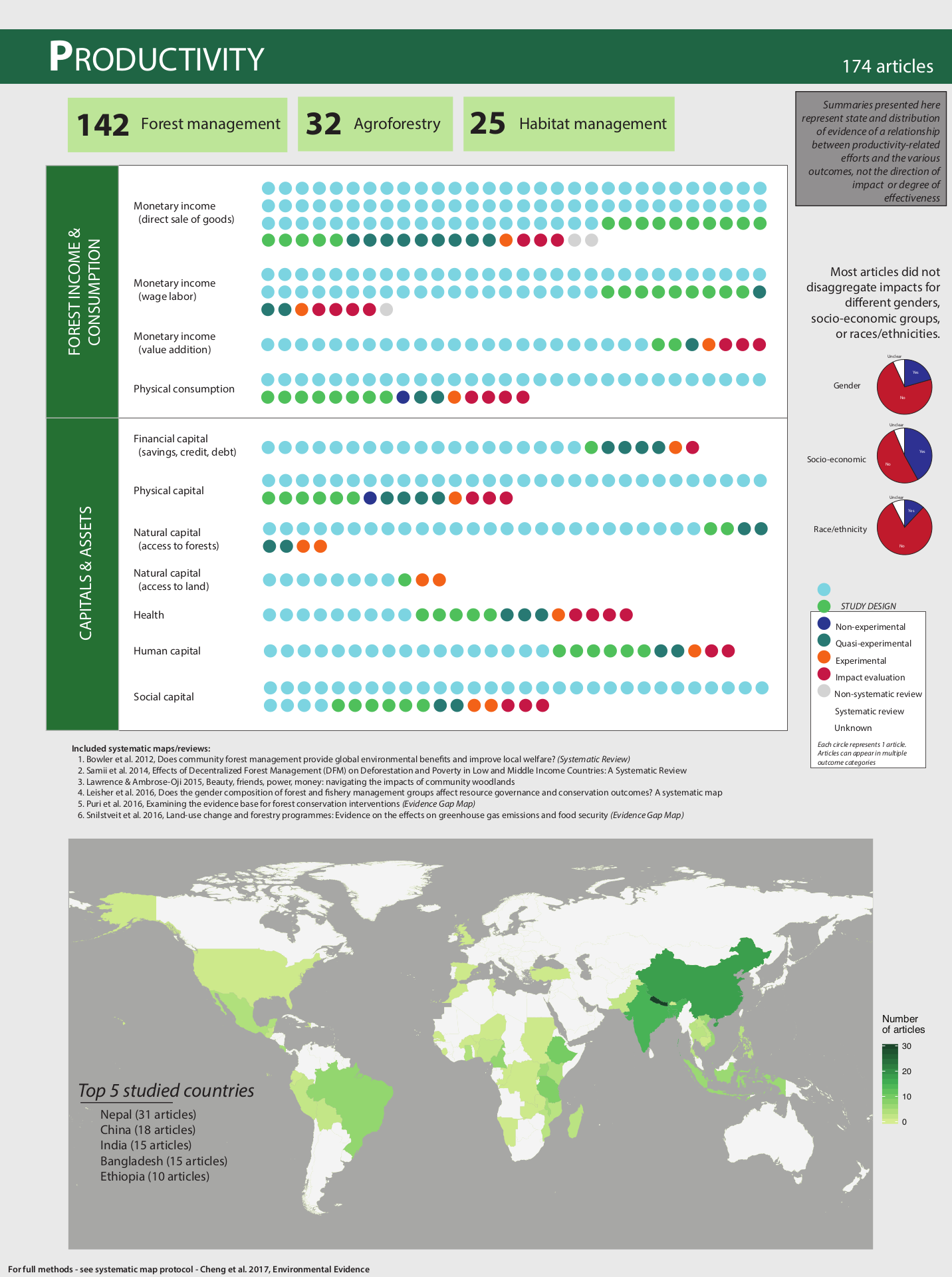
Illustrative Country Study
For instance, in Vietnam where some 25 million people live in and around forests (Auer 2012), which make up 48% of land area (FAO 2015), the World Bank invested in the Vietnam Forest Sector Development Project, which supported smallholder forest operations that brought gains to households' livelihoods.
World Bank Portfolio Review Results
Using the search criteria for the portfolio review, out of the total number of World Bank projects that met the criteria for inclusion in the portfolio analysis completed under this program (38), 22 (roughly 58 percent) contained forest productivity components as defined by the PRIME framework. These projects also contained other PRIME elements, showing the synergies and complementarities that exist among the components. For example, 19 of the 22 productivity projects have investment components; eight also contained rights components, six markets components, and five ecosystem components. Geographically, the greatest number of forestry projects that contained productivity components were in the Bank’s East Asia and Pacific (EAP) region (seven), followed by Europe and Central Asia (ECA) (five). The other regions, Latin America and Caribbean (LAC) and Sub-Saharan Africa (SSA) had four each, while the Middle-Eastern and North-African (MENA) region and the South-Asian (SA) region had one each.
Split by
Color by
